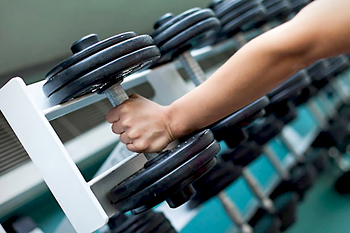Jun 4: The heady profusion of modern gymnasiums, be it at home, office or elsewhere, has made workouts a rage, but exercising without a proper training regime and guidance can take a toll on your health, and even be fatal, warn experts.
A recent incident of a young software engineer in Kolkata dying after falling from the treadmill has only highlighted the risks of unmonitored workouts and over-exercise. According to fitness experts, a trainer must have a questionnaire regarding the client’s medical history and pre-training assessment to find out how far the person can push himself or herself.
“A person who is clueless about fitness, needs to have a fitness trainer who can fix a ‘goal of training’ for him. If somebody with a back or a joint pain wishes to lose weight and the trainer, unaware of his illness, puts him into a high intensity workout regime, the pain will only aggravate,” says Chinmoy Roy, a fitness trainer with the National Cricket Academy.
“A questionnaire and a pre-training assessment by the trainer should do the trick. It should ask if the person has any metabolic issues like diabetes or blood pressure, cardiac issues or joint pains because in case he suffers from any of these complications, the exercise and its intensity will be completely different,” he explained.
Citing the example of Cameroon footballer Marc-Vivien Foe who died of cardiac arrest while playing for his country in the Confederations cup in 2003, the physio said though death during exercise is a rare occurrence, every such incident should act as a wake-up call for everybody.
Some experts rue that most of the gyms lack certified trainers and a flexible client-specific fitness module. “I believe a fitness trainer should at times have a better understanding of anatomy than a doctor. A doctor is not asking you to pick up a hundred kg weight, but the trainer is. So he should know his job very well. However, more than 90% of the fitness trainers in city gyms lack proper certifications,” said noted fitness trainer Ranadeep Moitra.
While stating that certifications for fitness trainers have started in India, Moitra argued that theoretical knowledge is often not enough. “It’s good that some private organisations have started certain initiatives to train the fitness instructors. However, in a majority of cases, certification only involves clearing a theoretical exam,” he claimed.
Strongly criticising the random use of steroids in fitness training, Moitra said the onus is both on the trainers and the trainees. “The onus is also on the trainees. Today, people are using steroids just to look good in a night club. They are running behind outer beauty rather than inner strength. This mindset has to change,” Moitra said.
According to doctors, unaccustomed physical activity without any prior conditioning can lead to extreme consequences like sudden cardiac death. “Therefore, a trainer should guide you through these kinds of fitness training regimes. People should first condition their body for physical activities and gradually increase the level of exercise,” according to cardiologist Sushan Mukhopadhyay of Kolkata’s Apollo Gleneagles Hospitals.
To avoid serious health issues, the fitness centres should teach their trainers basic life-support therapy and provide them a shock defibrillator, if possible. “It is a must for people working as fitness trainers to be aware of basic life-support therapy so that they can do a basic cardiac massage,” said Mukhopadhyay.
“In nearly 50% of the cases of sudden cardiac deaths, the patients can be revived by giving shock treatment. Therefore. a shock defibrilator can be of good use in emergency situations,” he added.





Comments
Add new comment